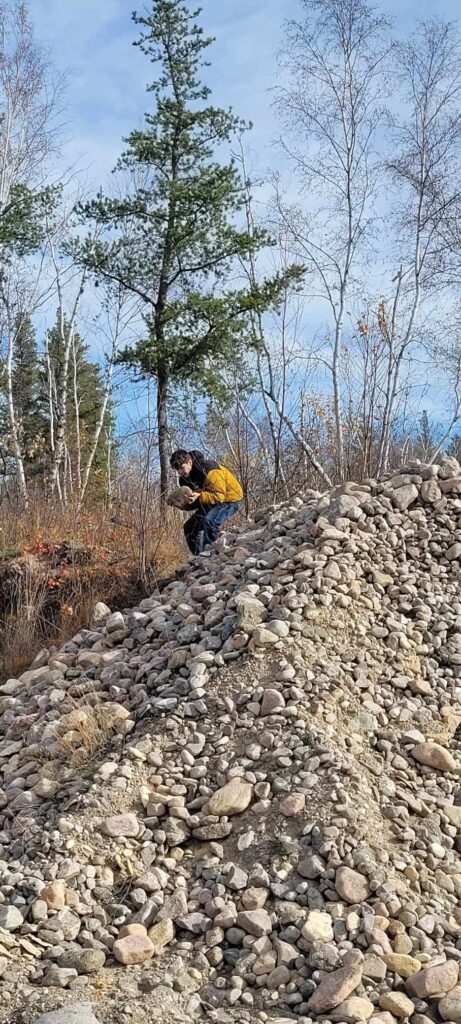
Action Therapy™ is a structured, trauma-informed, and community-based therapeutic modality that integrates counseling, social justice, land-based
healing, cultural practice, and narrative therapy into a unified, holistic approach to mental wellness. It meets individuals where they are — physically, emotionally, mentally, and spiritually — by stepping outside traditional clinical settings and engaging directly in real-life environments.
Developed under the leadership of Mitch ourbonniere, with contributions from practitioners since 2011, Action Therapy™ emerged in response to the need for services that are relational, culturally grounded, and rooted in lived experience. It centers those most impacted by trauma, systemic injustice, and disconnection — particularly youth.

Action Therapy™ draws from a blend of therapeutic and relational approaches, including.
Narrative Therapy: Helps clients externalize problems, reclaim identity, and re-author life stories rooted in strength and dignity. Therapists are decentered but influential — offering presence, not control.
Trauma-Informed Practice: Recognizes the impact of trauma and prioritizes safety, regulation, and empowerment in every interaction. Somatic, relational, and experiential tools support healing.
Community-Based and Experiential Healing: Therapy happens in kitchens, on sidewalks, during patrols, and in moments of shared purpose — not just in offices. Healing is active, embodied, and connected.
Land-Based and Cultural Healing: Land is a co-therapist. Medicine walks, harvesting, traditional teachings, and fire circles support regulation, identity, and belonging.
Social Justice and Advocacy: Systems are not background issues — they are clinical realities. Therapy makes space to talk about colonization,
poverty, racism, and injustice, while supporting youth to respond in ways that are safe, dignified, and empowering.
Action Therapy™ draws from a blend of therapeutic and relational approaches, including.
Narrative Therapy: Helps clients externalize problems, reclaim identity, and re-author life stories rooted in strength and dignity. Therapists are decentered but influential — offering presence, not control.
Trauma-Informed Practice: Recognizes the impact of trauma and prioritizes safety, regulation, and empowerment in every interaction. Somatic, relational, and experiential tools support healing.
Community-Based and Experiential Healing: Therapy happens in kitchens, on sidewalks, during patrols, and in moments of shared purpose — not just in offices. Healing is active, embodied, and connected.
Land-Based and Cultural Healing: Land is a co-therapist. Medicine walks, harvesting, traditional teachings, and fire circles support regulation, identity, and belonging.
Social Justice and Advocacy: Systems are not background issues — they are clinical realities. Therapy makes space to talk about colonization,
poverty, racism, and injustice, while supporting youth to respond in ways that are safe, dignified, and empowering.
Healing happens in connection, not isolation. Action Therapists build trust through consistency, care, and presence. Therapeutic connection is the foundation — showing up again and again in moments that matter.
Healing is social. Youth engage in group activities, community patrols, food distribution, ceremonies, and service. These reinforce purpose, belonging, and shift identity from “client” to “community member”.
The land holds memory and medicine. Youth engage in walking, harvesting, gathering, and reconnecting with traditional and natural rhythms to ground, regulate, and reconnect.
Therapy must acknowledge systemic harm. Action Therapists help youth make sense of injustice, challenge systems, and build strength through knowledge, solidarity, and voice.
Culture, story, and spirituality are essential. Action Therapy™ holds space for prayer, storytelling, smudging, singing, sacred fires, and values exploration — whatever spirit means to the youth.

Action Therapy™ is present, flexible, and responsive. Whether it’s a moment of
crisis, a walk to court, or helping prepare a meal, therapists stay attuned to
deeper healing possibilities in real-life settings.
Includes:
Therapy is not separate from daily life — it is woven into it.
Youth heal by contributing. Community service builds dignity, belonging, and agency. It helps youth move from being recipients of help to being helpers.
These moments support:
Healing includes reclaiming power. Youth are supported to challenge oppression through storytelling, creative expression, civic engagement, and learning about justice and resistance.
Examples:
Therapists help youth prepare, regulate, and reflect on these actions so that activism becomes healing — not retraumatizing.
Rooting therapy in tradition, ceremony, and connection to the natural world.
This pillar of Action Therapy™ recognizes that healing is not only emotional and psychological, but deeply cultural, spiritual, and ecological. We return to the land and to traditional ways of knowing — not as supplemental activities, but as central therapeutic practices that support regulation, identity, and connection.
Ceremony plays a key role in this work. For many youth, healing begins not in a therapy room, but around a sacred fire, during a pipe ceremony, or while preparing a feast. Through ceremony, youth are invited to reconnect with identity, spirit, ancestors, and purpose.
Examples of ceremonies integrated into Action Therapy™ include:
Land-based healing includes:
Therapy is not just about words — it’s about remembering. It’s about reconnecting with land, culture, one another, and our truest selves.
All Action Therapists™ receive structured training in:
Therapists attend regular advanced workshops and intensives on:
New Action Therapists are paired with experienced mentors to:
All Action Therapy™ work is clinically and culturally supervised through: